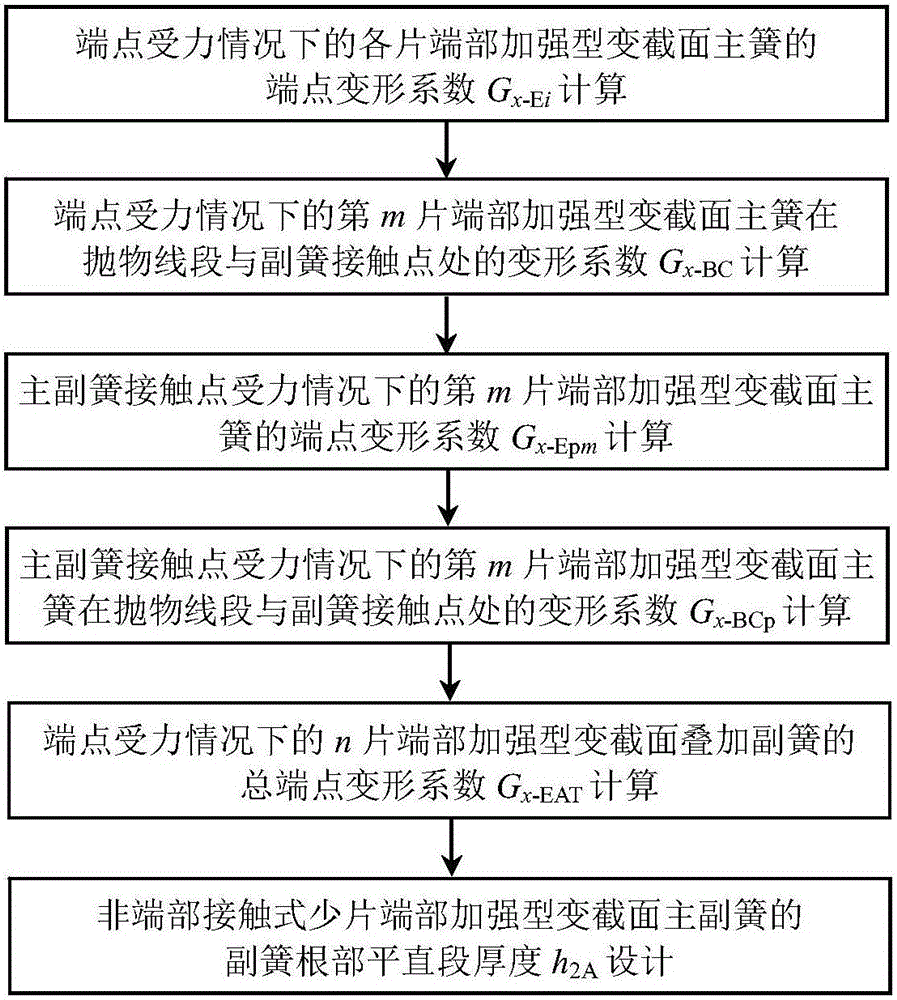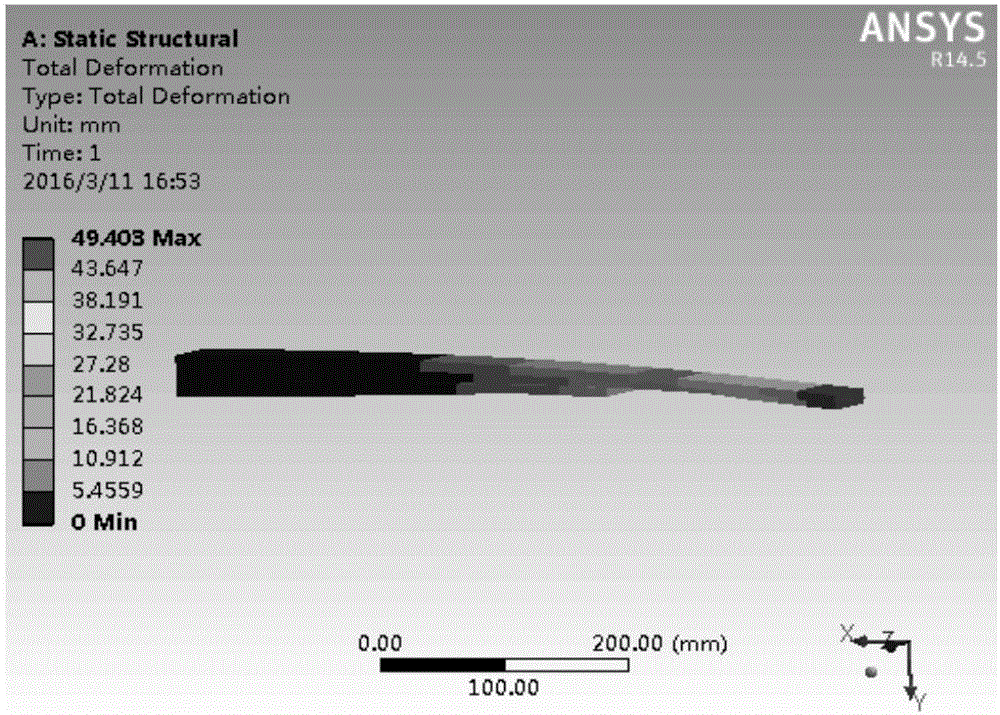Method for designing root thickness of non-end-contact type taper-leaf end reinforced auxiliary spring
A technology of root thickness and design method, applied in calculation, special data processing application, instrument, etc., can solve problems such as difficult analysis and calculation, unsatisfactory, complex structure, etc.
- Summary
- Abstract
- Description
- Claims
- Application Information
AI Technical Summary
Problems solved by technology
Method used
Image
Examples
Embodiment 1
[0037] Embodiment 1: The width of a non-end contact type few-piece end-reinforced variable-section primary and secondary springs is b = 60 mm, half of the installation distance l 3 =55mm, length Δl of oblique line segment=30mm, elastic modulus E=200GPa. Half the length L of the main spring M =575mm, the thickness h of the straight section at the root of each main spring 2M =11mm, the distance l from the root of the parabola segment to the end point of the main spring 2M = L M -l 3 =520mm; the number of main reeds m=2, where the end thickness h of the parabolic segment of the first main spring 1Mp1 =6mm, the thickness ratio of the parabola segment β 1 =h 1Mp1 / h 2M =0.55, the distance l from the end of the parabola segment to the end point of the main spring 1Mp1 = l 2M beta 1 2 =154.71mm, the thickness h of the straight section at the end 1M1 =7mm, the thickness ratio of the oblique line segment γ M1 =h 1M1 / h 1Mp1 =1.17, the length l of the straight section at ...
Embodiment 2
[0064] Embodiment 2: The width b of a non-end-contact type few-piece end-reinforced variable-section primary and secondary springs = 60mm, half of the installation distance l 3 =60mm, the length of the oblique segment Δl=30mm, and the modulus of elasticity E=200GPa. Half the length L of the main spring M =600mm, the thickness h of the straight section at the root 2M =12mm, the distance l from the root of the parabola segment to the end point of the main spring 2M = L M -l 3 =540mm; the number of main reeds m=2, where the end thickness h of the parabolic segment of the first main spring 1Mp1 =6mm, the thickness ratio of the parabola segment β 1 =h 1Mp1 / h 2M =0.5, the distance l from the end of the parabola segment to the end point of the main spring 1Mp1 = l 2M beta 1 2 =135mm, the thickness h of the straight section at the end 1M1 =7mm, the thickness ratio of the oblique line segment γ M1 =h 1M1 / h 1Mp1 =1.17, the length l of the straight section at the end 1M...
PUM
| Property | Measurement | Unit |
|---|---|---|
| Width | aaaaa | aaaaa |
| Half length | aaaaa | aaaaa |
| Elastic modulus | aaaaa | aaaaa |
Abstract
Description
Claims
Application Information
 Login to View More
Login to View More - R&D
- Intellectual Property
- Life Sciences
- Materials
- Tech Scout
- Unparalleled Data Quality
- Higher Quality Content
- 60% Fewer Hallucinations
Browse by: Latest US Patents, China's latest patents, Technical Efficacy Thesaurus, Application Domain, Technology Topic, Popular Technical Reports.
© 2025 PatSnap. All rights reserved.Legal|Privacy policy|Modern Slavery Act Transparency Statement|Sitemap|About US| Contact US: help@patsnap.com



